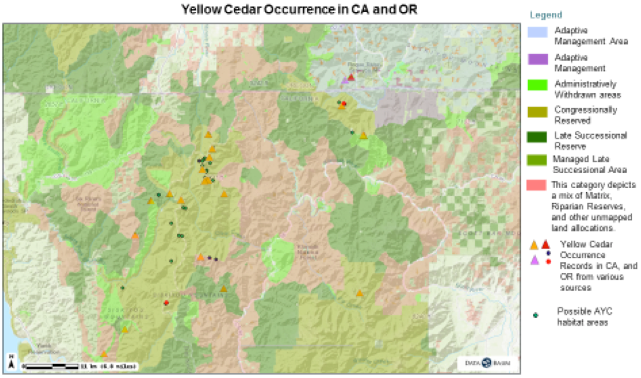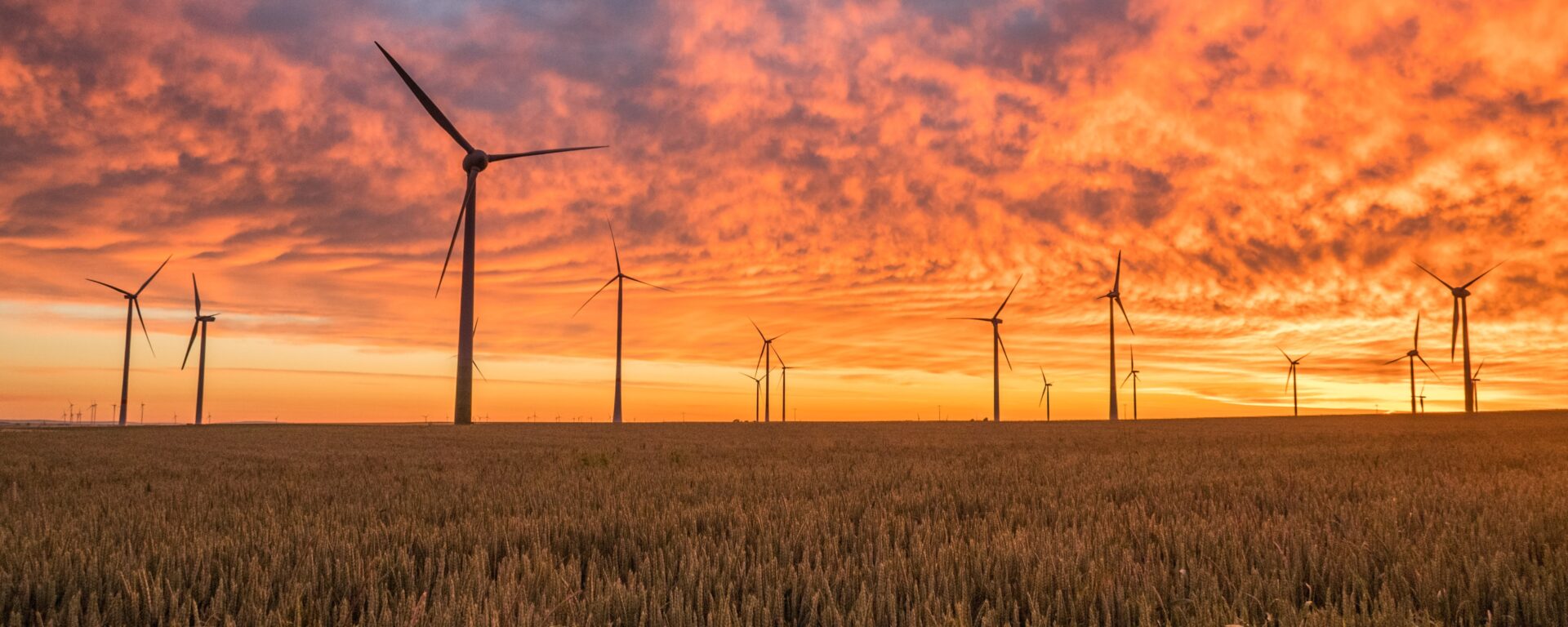CBI worked closely with the Department of Land Conservation Development (DLCD) and other project collaborators to carry out an expansive spatial data review and stakeholder engagement process to better understand renewable energy opportunities and constraints in Oregon. It was part of a larger effort called the Oregon Renewable Energy Siting Assessment (ORESA) project, which was funded by the U.S. Department of Defense Office of Economic Adjustment. This larger project included Oregon Department of Energy (ODOE) working closely with Oregon Department of Land Conservation and Development (DLCD) and Oregon State University’s Institute for Natural Resources (INR).
Data Basin was used to support the spatial data review process resulting in a transparent and accurate spatial data library needed for effective renewable energy planning in the state. Approximately 650 datasets were reviewed with most of them still available on Data Basin. The final Opportunities and Constraints final report was included as part of supporting materials to the larger project.
CBI worked closely with the Natural Resource Defense Council (NRDC) to integrate relevant spatial datasets to map areas of high value from the standpoint of carbon storage and sequestration, terrestrial ecological value, and aquatic value in support of several NRDC programs, including their 30X30 campaign to protect 30% of nature in the nation by 2030. Click here to learn more about the 30×30 initiative.
Using CBI’s online modeling software called Environmental Evaluation Modeling System (or EEMS), team members were able to construct, review, and modify the models in a rigorous and highly transparent fashion from their individual remote locations. The resulting “living” models can then be used alone or together and in combination with other spatial data (e.g., existing protected areas) to add further context and insight using Data Basin. Data Basin and EEMS were effectively used to help guide NRDC’s important conservation mission.
The need to plan strategic, effective forest management is urgent in the southern Sierra Nevada, where forests have been ravaged by drought, fire, and catastrophic tree mortality. Multiple, sometimes conflicting, management objectives must be balanced, and multiple agencies need help coordinating their forest restoration actions. A common, readily accessible system evaluating landscape-scale forest condition is needed.
Conservation Biology Institute is working with the Sierra Nevada Conservancy, Sequoia National Forest, Sequoia National Parks, Sequoia Parks Conservancy, Save the Redwoods League, and others to develop forest resilience models and create a toolkit for exploring these data to support the planning of a range of resource management goals. These goals include the protection of sequoia groves, overall forest health, wildfire protection, and endangered species habitat management. The project is supported by CBI’s data sharing and mapping platform Data Basin. The project is funded by the Save the Redwood League and Sequoia National Park through its partner the Sequoia Parks Conservancy, and CAL FIRE Forest Health Research Grant Program.
Conservation Biology Institute is a partner in a new $1 million grant from a new interdisciplinary NSF program to foster building an “open knowledge network.” The inspiration for this type of network comes from Tim Berners-Lee’s (best known founder of the World-wide Web) vision for the “semantic web,” which applies tags with relationships to information on the Internet, allowing computers to do basic reasoning for improving search results and answering questions. Apple’s Siri, Amazon’s Alexa, and Google’s Assistant all use these technologies.
Dr. John Gallo co-wrote the proposal and leads CBI’s participation in the team of 13 researchers and practitioners from 10 other institutions. The team is focused on improving access and contributions to tools for analyzing geographic data called spatial decision support systems. “The proliferation of online mapping technologies has greatly increased access to and utility of these kinds of tools, and a logical next step is increasing our ability to find the appropriate data and tools for your problem and link these together for more complex analyses,” says Principal Investigator Sean Gordon of Portland State University. Through engaging stakeholders in three applied case studies (the management of wildland fire, water quality, and biodiversity conservation), the interdisciplinary project team will develop and test participatory and automated methods for finding and sharing decision-relevant information using semantic web technologies.
The new NSF Convergence Accelerator program is named for its focus on bringing together interdisciplinary teams to address one of NSF’s 10 big ideas, specifically “Harnessing the Data Revolution“, also known as building an Open Knowledge Network. Eighteen other of these phase 1 grants were made, covering areas from molecular manufacturing to tracking potentially disruptive solar phenomena. The “accelerator” part comes from the short time frame. “The application required a 3-week turn around, which is very quick for a NSF grant,” Gordon said. “Our success was largely due to having formed the Spatial Decision Support Consortium, a professional networking group four years ago, so we had ideas and people ready to go.” Each phase 1 project is eligible to submit a phase 2 proposal for up to $5 million by next March, and the process will include giving a short “pitch” talk to a panel of experts and potential funders, much like a venture capital approach.
*Learn more about this ongoing project here.
The USDA Conservation Reserve Program (CRP) works with farmers and landowners to implement conservation management practices on enrolled lands, with paid contracts ranging from 10 to 15 years in length. The CRP Grasslands practices target restoration of agricultural grassland systems by augmenting native vegetation for pollinators, providing habitat for grassland plants and animals, increasing biodiversity, reducing soil erosion, and improving water quality. The USDA’s CRP has been successful in improving the conservation value of millions of acres of farmlands; however, the program currently lacks spatially explicit information on land cover and vegetation within CRP-enrolled tracts.
In partnership with the USDA FSA program, the Conservation Biology Institute (CBI) used a combination of remote sensing and machine learning algorithms deployed on the innovative cloud-computing platform, Google Earth Engine, to map grassland characteristics. We used a rich suite of enviro-climatic data, multiple sources of satellite imagery, and Random Forest modeling techniques to predict land cover for study areas in Washington, Colorado, and Kansas, where CRP Grasslands holdings are most prevalent. We used machine learning to create predictive maps of vegetation type by leveraging an extensive set of satellite-derived variables, environmental layers, and federal survey data (from BLM’s AIM and USDA NRCS’s NRI programs). Our initial investigation utilized Landsat 8 satellite data to model vegetation cover across the Washington study area and then scaled up to the Colorado-Kansas study area. The Washington study site was selected for further model enhancements and an in-depth comparison of Landsat 8, Sentinel-2, and MODIS satellite imagery, to evaluate differences in model development and performance among sensor types. We generated vegetation cover predictions for the year 2019 using Random Forest classification models. Classified outputs for the five vegetation cover models – annual grass, perennial grass, annual forb, perennial forb, and bare soil – were post-processed to exclude water and urban land cover and areas that were not relevant for mapping grasslands.
Mapped outputs showing vegetation percent cover predictions from our pilot project have been integrated into CBI’s CRP online decision support tool. This online tool offers functionality for managers and landowners to view, filter, compare and summarize geospatial information relevant for assessing CRP tracts in the study areas. You will need permission from USDA to use the tool, but it is available at https://crptool.org/. Anyone can view the design of the tool at USDA CRPtool.
You can read more details in the following publication.
Degagne, Rebecca; Pizzino, Declan; Friedrich, Hannah; Gough, Mike; Joseph, Gladwin; Strittholt, James; et al. (2022): Mapping Conservation Reserve Program Grasslands in Washington, Colorado, and Kansas with Remote Sensing and Machine Learning. figshare. Journal contribution. https://doi.org/10.6084/m9.figshare.19141853.v1

The Conservation Biology Institute and the Deschutes Trails Coalition (DTC) are in the process of developing a web-based system to assist the DTC in sustainably managing multi-use trails in Deschutes County. The collaborative process of creating a framework to support DTC’s decision making relies on modeling Environmental, Economic, Physical, and Social Sustainability of recreation activities and trails.
*Images provided by Danielle MacBain at the Deschutes Trails Coalition.

*The DTC Dashboard will include a form-based system to give users the ability to enter or modify information in the trails database.
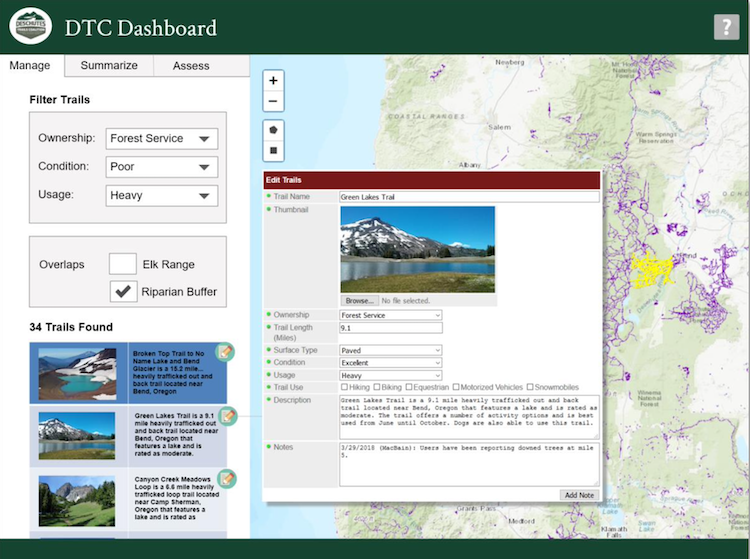
*Mockup of the DTC Dashboard (Query Tools on the Manage Tab)
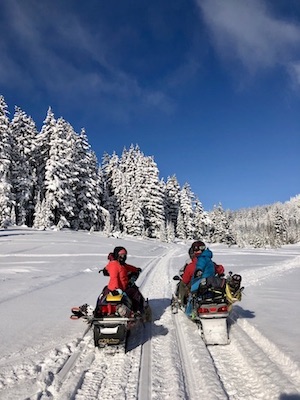
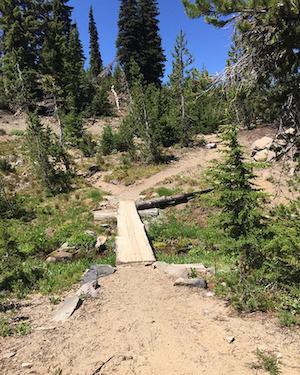
Conservation Biology Institute specializes in harnessing the power of spatial data for conservation planning and decision-making. We create tools in close collaboration with state agencies that help them achieve their missions. Recently we’ve had the opportunity to work with the California Department of Food and Agriculture (CDFA).
The CDFA Healthy Soils Program promotes the development of healthy soils on California’s farmlands and ranch lands by providing financial incentives to California growers and ranchers to implement agricultural management practices that sequester carbon, reduce atmospheric GHGs and improve soil health.
Conservation Biology Institute created the CDFA Healthy Soils Program tool, an online tool to streamline the submission process for proposals to the Healthy Soils Program. This tool, a custom module of RePlan, allows a grant recipient to locate and map proposed conservation practices, view and select from recommended species for planting, and conform with multiple project eligibility requirements. All project components are then summarized in a proposal report for upload to the CDFA Healthy Soils Program project submission website.
*Find the tool here: https://sitecheck.opr.ca.gov/
Conservation Biology Institute is working in partnership with Riverside County Habitat Conservation Agency, Bureau of Land Management, U.S. Fish and Wildlife Service, San Diego Zoo Wildlife Alliance Academy, and others to develop and implement a rangewide conservation plan for the Stephens’ kangaroo rat (Dipodomys stephensi, SKR), a tiny rodent native to Southern California’s shrinking grassland habitats.
The SKR Rangewide Management and Monitoring Plan, developed in collaboration with species managers, researchers, and land owners, complements existing management plans rather than replaces them, recognizing that each location has unique management priorities. Coordinating across local conservation efforts will facilitate collaborative conservation action across the species’ entire range.
The SKR Plan recommends management actions to improve habitat and ameliorate threats from human activities and climate change and provides a standardized monitoring protocol to track the species’ population status and trends. CBI has developed a customized field data collection application using ArcGIS Field Maps, and our SKR data management team supports the field monitoring effort and ensures long-term integrity of the data in partnership with USFWS’ Ecosphere Program.
This work builds upon a habitat suitability model developed in 2019 by Conservation Biology Institute using Sentinel-2 satellite imagery and being updated in time to support the 2024 monitoring season. These updatable landscape-scale habitat maps are the foundation for statistically-defensible monitoring and play a key role in planning coordinated conservation of the species.
This work is funded by the U.S. Bureau of Land Management. For more information about this effort, please contact Wayne Spencer at wdspencer@consbio.org or Brian Shomo at bshomo@wrcog.us.
Please see the SKR Rangewide Management and Monitoring Website for The SKR Rangewide Management and Monitoring Plan and Protocol, as well as other documents, maps, and data from this project.
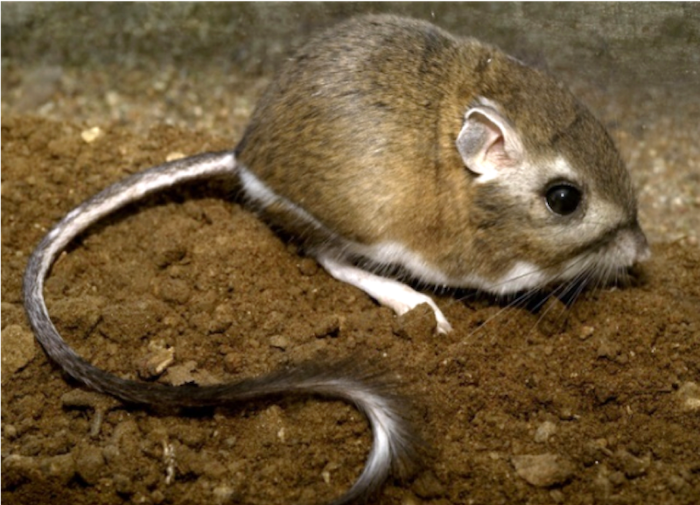
Stephens’ kangaroo rat (Dipodomys stephensi, SKR). Photo by Moose Peterson.
The Stephens’ kangaroo rat (Dipodomys stephensi) is an endangered mammal of grassland habitats in southern California. CBI is helping to conserve the species using satellite technology and advanced mapping techniques.
Kangaroo rats (or Krats, as biologists often call them) are seed-eating rodents restricted to arid regions of southwestern North America. The 20 or so Krat species are biologically similar to jerboas of the Mideast–and like mideastern jerboas and the kangaroos of Australia, they use their large hind limbs to bound efficiently and elusively through open habitats, especially deserts and grasslands. Being mostly nocturnal, Krats also have huge eyes for night vision and keen ears for hearing predators, like owls and foxes.
Stephens’ kangaroo rat (or biological shorthand, SKR) occupies open, undeveloped grasslands in western Riverside and San Diego counties in southern California. Because much of their habitat has been paved over and fragmented by development, the SKR was listed as Endangered under the the US Endangered Species Act and Threatened under the California ESA in the 1980s. Numerous ecological reserves have since been established to conserve remaining populations. Unfortunately, these scattered Krat reserves are not consistently managed, monitored, or even understood by the responsible resource management agencies, largely because it is difficult to map and track suitable habitat conditions over space and time. Traditional habitat variables, such as vegetation and soil types, are not nuanced enough to reflect the on-ground conditions that SKR need, and management and monitoring approaches differ amongst the reserves.
CBI is helping remedy this situation by using satellite imagery and innovative habitat modeling techniques to develop reliable statistical models to map habitat suitability across the species’ geographic range. In partnership with the US Fish and Wildlife Service, the Riverside County Habitat Conservation Agency (RCHCA), and species experts, we are developing a coordinated approach to mapping SKR habitat suitability to manage and monitor the species in a more scientifically consistent and justified manner. Specifically, we are using European Sentinel-2 satellite imagery, in concert with other reliable geographic data, to develop habitat suitability maps that can be routinely updated over time across the species range as conditions change. The resulting models will be used to inform management and monitoring efforts to conserve and recover this charismatic endangered species.
CBI is collaborating with the Rogue River-Siskiyou National Forest and the Klamath National Forest in their effort to conserve the Alaska yellow Cedar in its southern range, located in Southern Oregon and Northern California, where it faces extreme extinction risk due to climate change. Concerted conservation efforts are needed to develop and implement conservation and reforestation strategies, in order to manage forest tree species for sustainability in the future. CBI will help coordinate the collection of seeds from trees from 8 sites, tag and geo-reference each tree, gather information on the general health of these stands, and submit the seeds to the national seedbank in Fort Collins. In addition, current-year needles will be also collected from each seed tree for later genetic/genomics analysis by Richard Cronn and team at the Pacific Northwest Research Station of the USFS.
Alaska Yellow Cedar (Callitropsis nootkatensis) has an extensive range from Alaska to Northern California (Fig. 1). It is declining in the northern part of its range due to a combination of factors associated with climate change and is a rare species in the southern part of its range in California and Southern Oregon. These southern populations are relics that occur in isolated stands in sub-alpine zones in cool wet sites at higher elevation > 5000 ft (Fig 2). The species is currently under review for listing as a threatened or endangered species.
Update 12/18
CBI finished cone collections in September, 2018, from six populations across three sites in Southern Oregon and three sites in Northern California. Access to other sites was restricted due to the Klondike Fire burning in Southern Oregon. This completes the first systematic collection of mature cones from these southern populations.
We have recieved word from the US Forest Service, Bend Seed Extractory, located in Bend Oregon, that they have successfully extracted viable seeds. The next step is to send them to the National Seed Laboratory in Dry Branch, Georgia, USA. Once there, these seeds will be entered into the the national germplasm bank making these the very first entries for these relic southern populations.
Needle tissue that was collected from 10 trees at each site will be genetically analyzed by researchers at the USFS Forest Science lab in Corvallis.This analysis will help determine if these populations are genetically distinct sub-populations from their northern counterparts which will help guide conservation of this species.
The Rogue River-Siskiyou National forest office is planning to use some of these seeds to grow seedlings to test for certain traits such as disease resistance and drought tolerance. The hope is that seeds collected from these southern populations may be used for restoration plantings in the northern regions.
In the north, Alaska Yellow Cedar is a valuable timber species but has been declining as a result of the climate crisis.
Conservation of these southern populations may prove to be critical for the longterm management of northern Alaska Yellow Cedars on public and private lands.
Fig 1. Range map for Alaska yellow cedar.
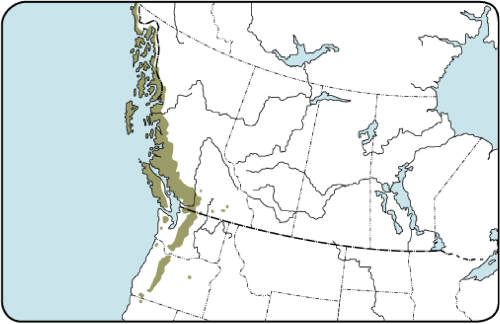
Source: http://tidcf.nrcan.gc.ca/en/trees/factsheet/376
Figure 2. Current known yellow cedar locations in the Siskyou Mountains (CBI 2017)
